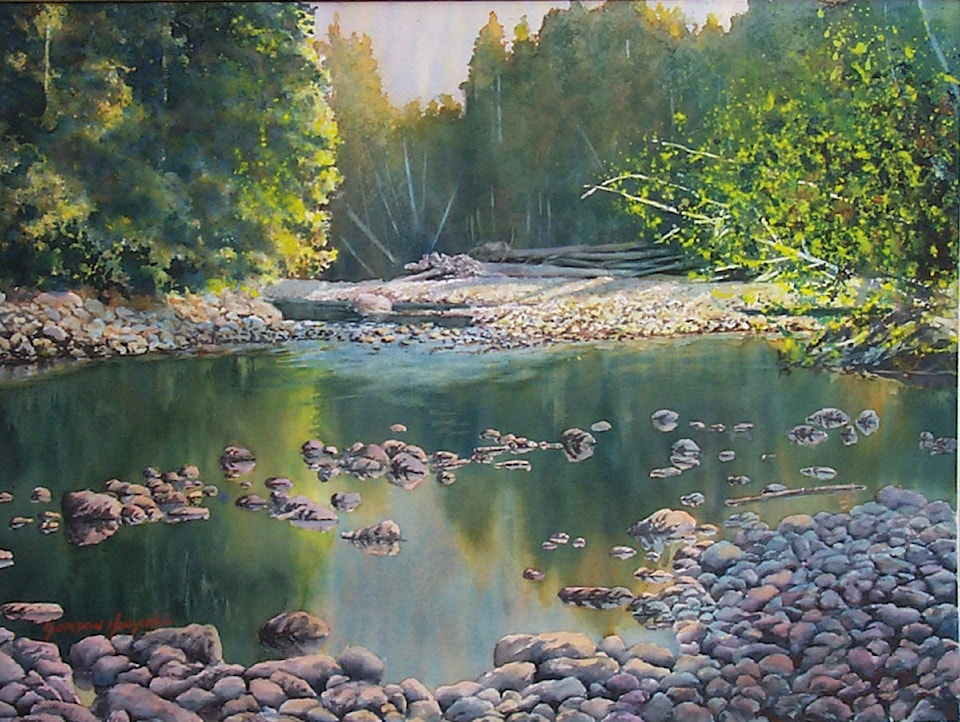Rocks, gravel beds and sand bars; tree trunks lying in or near the water; cool, deep, slow-running pools separated by swift, shallow water, bubbling over partially visible boulders; and dark sections where the forest is so close to the stream as to be almost connected. This description is the essence of the kind of stream that a dozen or more species of our west coast fish need to perpetuate their kind.
Most viewers of the accompanying painting will swear they know this very spot; even fished its pool. It does indeed look like the generic stream of the west coast. It could be the Keogh, Quatsi, Nimpkish or any other stream on the west side of Vancouver Island; not to mention the dozens of mainland rivers. There is one difference, though: The stream from which this picture was painted is pristine.
Several years ago I had the good fortune to accompany a friend, who worked for the Provincial Fisheries, on a jaunt up the lower reaches of the Tsitika River. Normally no-one is allowed this casual privilege because Robson Bight and the lower Tsitika are an ecological reserve. B.C. Fisheries, however, is given free rein to keep a watch on the state of the river and its estuary.
From Telegraph Cove, we went by boat into Robson Bight, landed our small craft on the shore near the estuary and made our way on foot from there. Wending our way through the stands of huge spruce that lined the river’s shores, we made our way up its gravel bars. This wasn’t as difficult as usual since it was August and the river was low, but all around us, high up on its banks, were trees that had been uprooted by winter floodwaters.
I love visiting this river. On its lower reaches it is one of the few reasonably accessible, truly pristine streams. A kilometer or so from its estuary you can still feel as if time has somehow eluded you and you are back in primeval days.
On this hot summer day I walked away from the river and entered the forest. Had this been a previously logged area, it would have taken only minutes to walk through the buffer of trees skirting the stream into open sunlight. Instead, as I entered the dark forest, deep mosses underfoot, the most obvious sensations were low light, coolness and total silence.
My first thoughts were that this micro-climate, so close to the river, must have an effect upon the temperature of the water and ultimately on the success of the fish spawning. My friend from the fisheries later confirmed my thoughts. The deep mosses also had a filtering effect on the amount of silt entering the stream. Score two points for bigger buffer zones. I have been painting along the riverbanks of the west coast for thirty-seven years now.
A great many of them have had their surrounding territory logged, leaving them with the mandatory buffer of trees along the shore. After having experienced painting along the Tsitika, I guess I’ve been spoiled; because when I look up through the trees, missing is the micro-climate and the deep mosses and, during the last few years, so are the fish in the rivers. At least there are a lot fewer. A co-incidence?
Perhaps, but I am reminded of a Bob Dylan song we used to sing in the sixties: “The Times They Are A-changing”.
The question is, are we willing to change along with them?
Comments e-mail: ghenschel@shaw.ca, or website: www.henschel.ca
